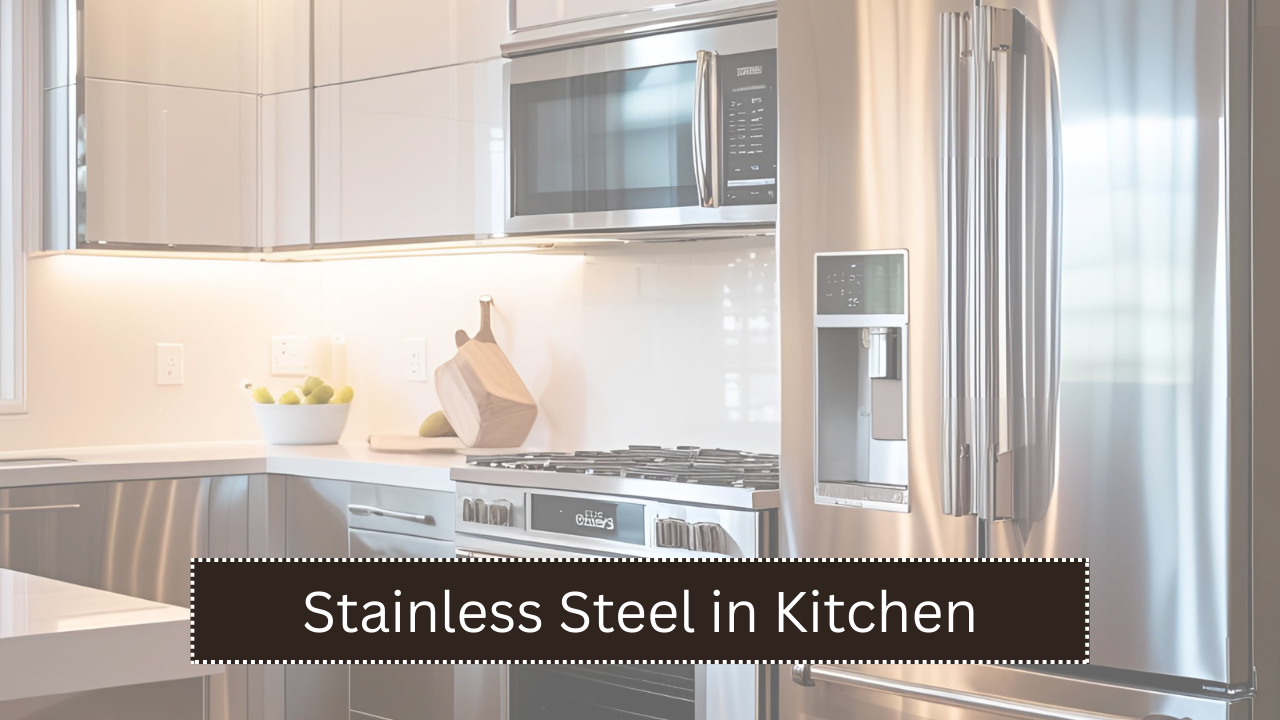Stainless steel has become the first choice in both kitchen and medical environments across the world. Its popularity is due to a unique mix of strength, hygiene, resistance to corrosion, and aesthetic appeal. In spaces where cleanliness, durability, and safety matter the most, stainless steel proves to be unmatched.
Both professional kitchens and medical facilities demand materials that are easy to clean, resistant to damage, and safe for food or bodily contact. Stainless steel meets all these standards, making it the top material used for sinks, surgical tools, cooking utensils, countertops, and more.
Key Features of Stainless Steel
The table below highlights the major characteristics that make stainless steel ideal for use in kitchens and hospitals:
| Feature | Description |
|---|---|
| Corrosion Resistance | Does not rust or corrode when exposed to moisture or harsh cleaning agents. |
| Durability | Withstands high temperatures, pressure, and impact without cracking or warping. |
| Hygienic Surface | Non-porous and easy to sterilize, making it ideal for food and medical use. |
| Chemical Resistance | Stands up to acids, detergents, and disinfectants commonly used in cleaning. |
| Low Maintenance | Requires minimal upkeep while maintaining a shiny and smooth appearance. |
| Recyclability | 100% recyclable, making it an eco-friendly material. |
| Aesthetic Appeal | Sleek, modern appearance suits professional kitchens and clinical environments. |
Stainless Steel in Kitchen Equipment
Kitchens, especially in commercial restaurants and hotels, demand high performance and hygiene. Stainless steel offers both. It is found in countertops, cookware, storage racks, sinks, refrigerators, and dishwashers.
Advantages in Kitchen Use
- Hygiene: Its smooth surface resists bacteria and is easy to clean.
- Heat Tolerance: Can handle extremely hot pots and pans without damage.
- Corrosion Resistance: Handles exposure to salty or acidic ingredients.
- Strength: Durable under heavy use, such as in restaurants and catering businesses.
- Non-Reactive Surface: Does not change the taste or color of food during cooking.
Common Kitchen Applications
| Kitchen Equipment | Why Stainless Steel Is Used |
|---|---|
| Cookware (pots, pans) | Resists warping under heat and doesn’t react with acidic foods. |
| Worktops and counters | Non-porous and easy to disinfect. |
| Sinks and faucets | Durable, rust-resistant, and maintains shine. |
| Storage shelves | Strong, long-lasting, and resistant to moisture. |
| Food processing tools | Safe, hygienic, and easy to sterilize. |
Stainless Steel in Medical Equipment
Hospitals and clinics depend on materials that maintain sterile conditions. Stainless steel is the most commonly used material in operating rooms, labs, and patient care settings due to its germ-resistant nature.
Why Medical Industry Prefers Stainless Steel
- Sterilizability: Can be cleaned with steam, chemicals, and high-temperature methods.
- Non-Porous: Does not allow microbes to settle or grow.
- Strength: Withstands constant use and high-stress procedures.
- Compatibility: Safe for implants and tools used inside the human body.
- Longevity: Retains performance and structure even after repeated cleaning and use.
Common Medical Uses
| Medical Item | Reason for Stainless Steel Use |
|---|---|
| Surgical instruments | Can be sterilized repeatedly without losing sharpness or shape. |
| Hospital beds and frames | Strong, durable, and easy to clean surfaces. |
| IV stands and medical carts | Lightweight yet sturdy and rust-resistant. |
| Dental tools | Precise, easy to sterilize, and resistant to chemical damage. |
| Orthopedic implants | Biocompatible and long-lasting in the human body. |
Hygiene and Cleanliness Benefits
Cleanliness is non-negotiable in both the kitchen and medical field. Stainless steel provides an ideal surface that can be cleaned thoroughly and quickly. It prevents microbial growth and doesn’t absorb fluids, grease, or other contaminants.
Comparison: Stainless Steel vs Other Materials
| Material | Corrosion Resistance | Sterilizability | Durability | Hygiene |
|---|---|---|---|---|
| Stainless Steel | Excellent | High | Excellent | Excellent |
| Plastic | Poor | Low | Medium | Low |
| Wood | Poor | Very Low | Low | Poor |
| Aluminum | Moderate | Moderate | Moderate | Moderate |
| Ceramic | Good | Moderate | Fragile | Good |
Stainless steel clearly stands out in all categories, especially in settings where sanitation and resilience matter.
Eco-Friendly and Cost-Effective Option
Stainless steel is not only strong and hygienic but also sustainable. It is 100% recyclable and can be reused without any loss of quality. This makes it a popular material in industries looking for eco-friendly solutions.
- Recyclability: Stainless steel can be melted and reused many times.
- Lifespan: The long life reduces the need for frequent replacements.
- Low Maintenance: Requires fewer cleaning products and little effort.
Long-Term Cost Benefits
| Aspect | Stainless Steel | Plastic/Wood |
|---|---|---|
| Initial Cost | Moderate | Low |
| Maintenance Cost | Low | High |
| Replacement Frequency | Very Low | Frequent |
| Long-Term Savings | High | Low |
| Environmental Impact | Low (due to recycling) | High (non-biodegradable waste) |
Visual and Functional Appeal
The clean, shiny look of stainless steel enhances the overall appearance of kitchens and medical facilities. It reflects cleanliness, professionalism, and modern design. Functionally, it is lightweight and easy to mold, allowing manufacturers to create everything from sleek countertops to fine surgical scissors.
- Modern Look: Creates a professional and polished appearance.
- Customizable: Can be shaped and fabricated into various designs.
- Scratch-Resistant Finishes: Maintains a neat look even with frequent use.
Closing Reflections
Stainless steel continues to be the most preferred material in kitchens and healthcare environments because of its unmatched combination of hygiene, durability, corrosion resistance, and ease of maintenance. Whether it’s a surgical tool or a cooking pan, stainless steel ensures safety, cleanliness, and long-term value. Its wide range of uses, recyclability, and reliability make it a practical and smart choice for the future.

